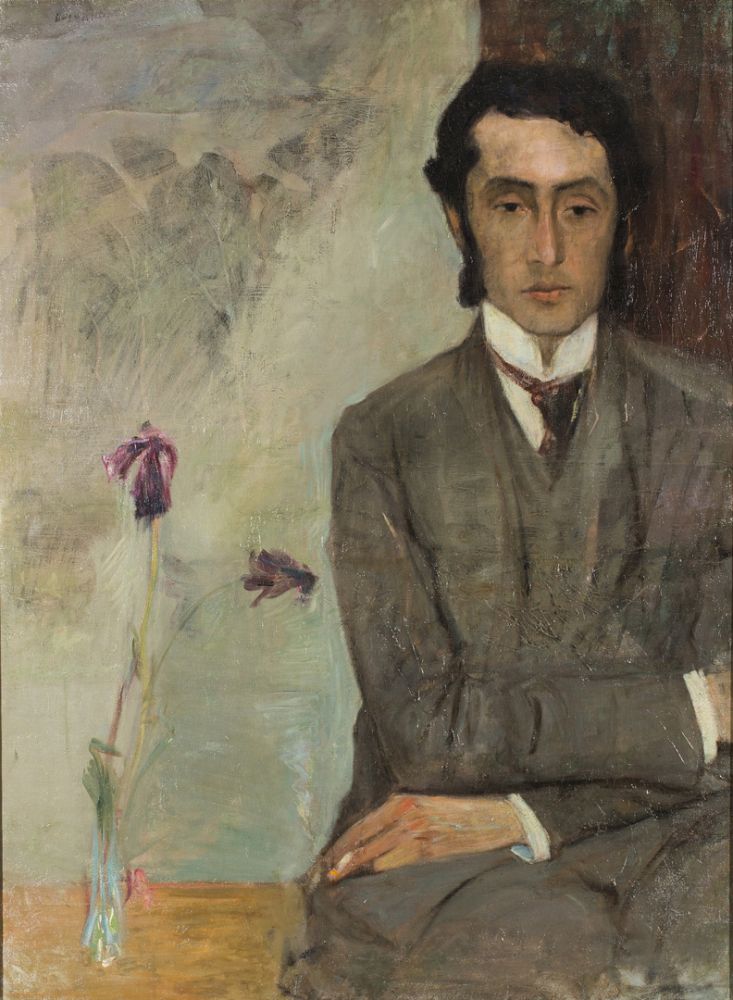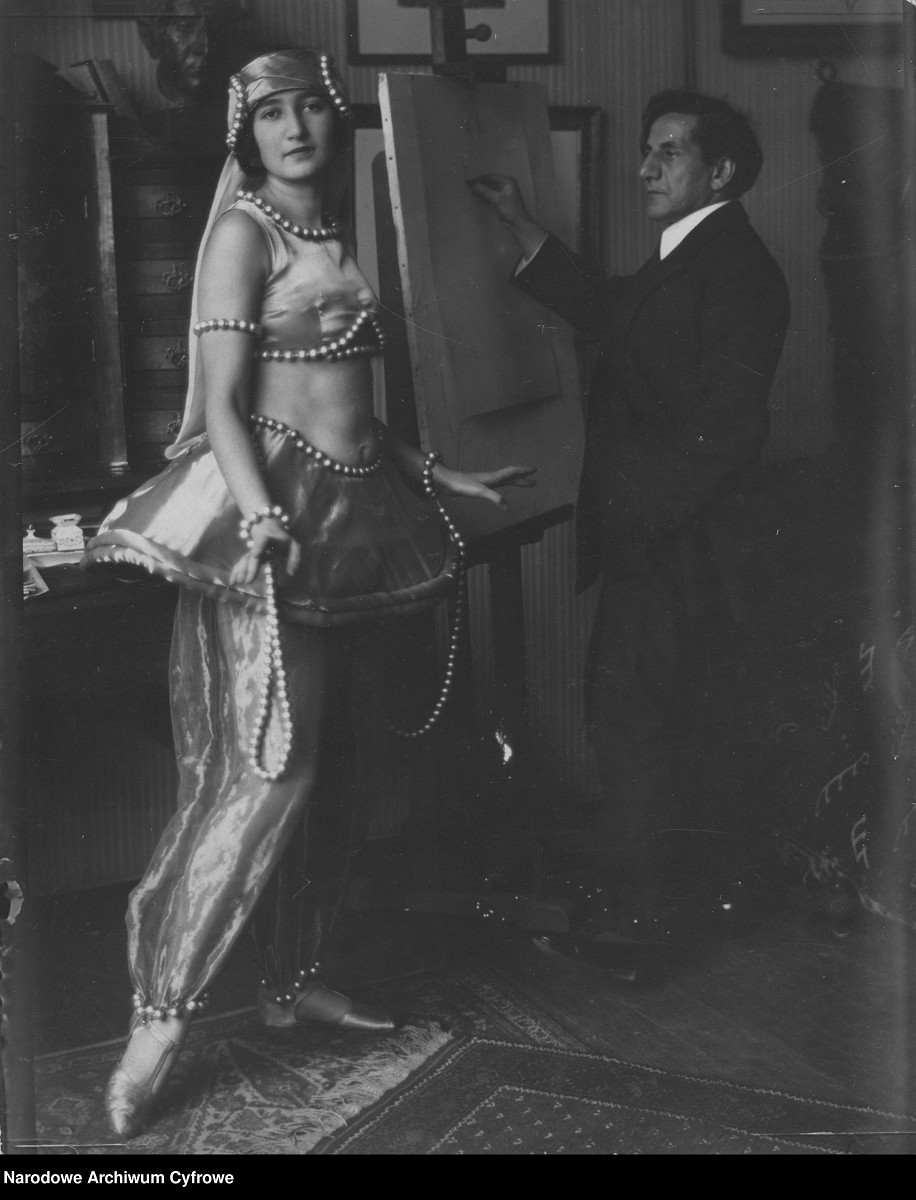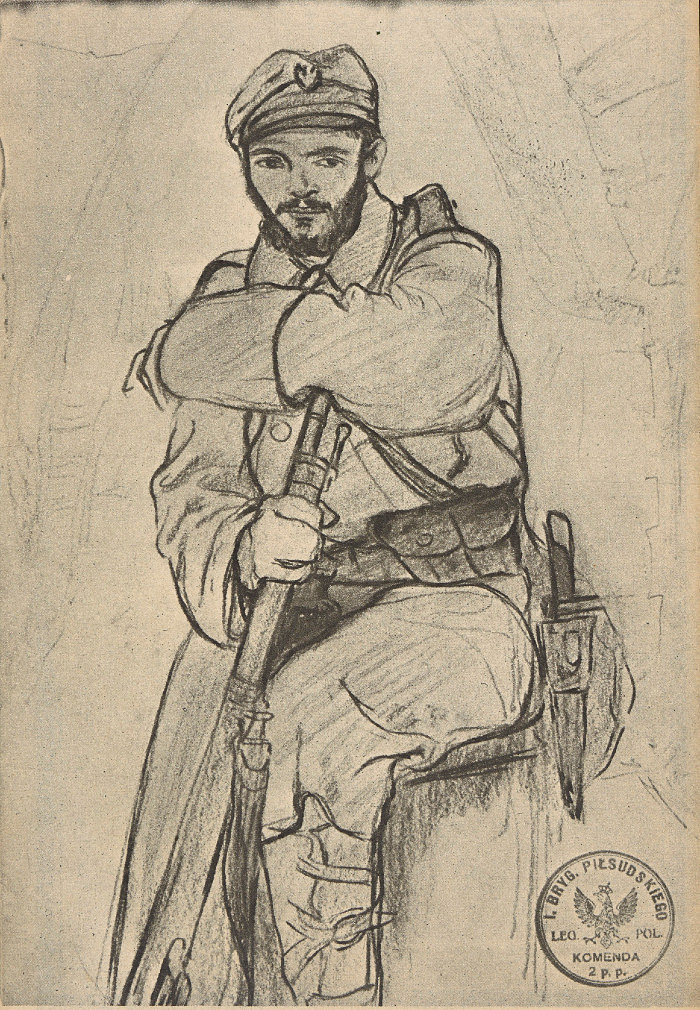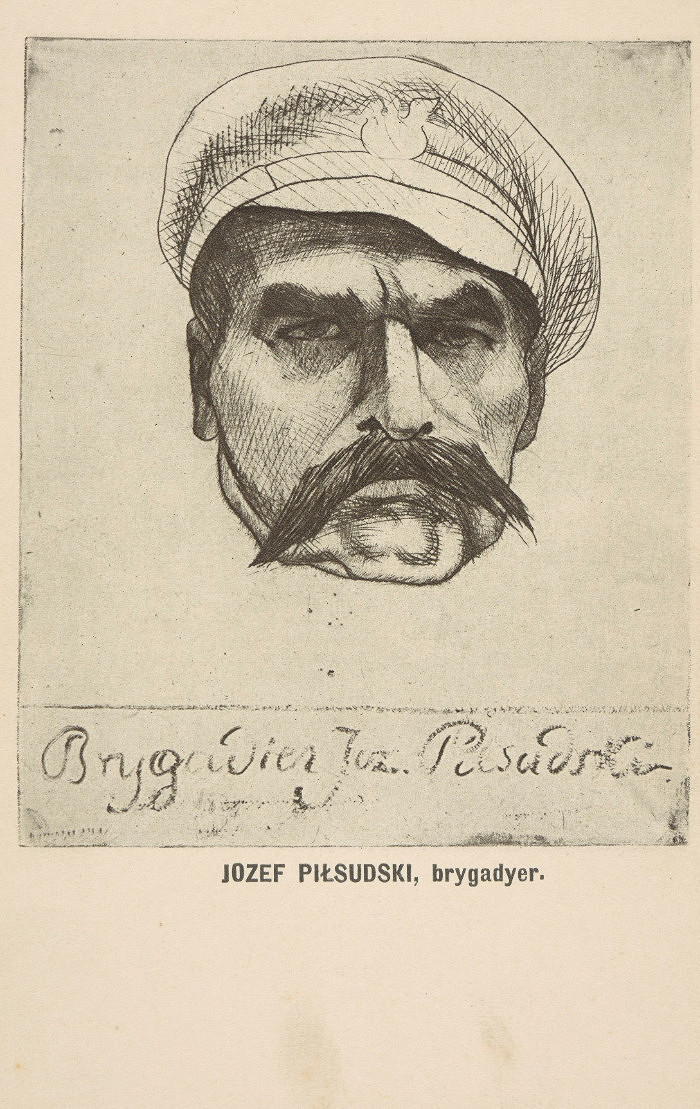- News
- Events
- Oneg Shabbat
- Collections
- Research
- Exhibitions
- Education
- Publishing Department
- Genealogy
- About the Institute
- Bookstore


Leopold Gottlieb, ’Portrait of Doctor Ber Kupczyk’, oil on canvas, ca. 1907 (detail) /
Leopold Gottlieb was born in 1879 in Drohobycz to Izaak and Felicja, nee Tiegerman. His father was a wealthy industrialist, owner of an oil refinery — when in the 1850s oil was discovered in the area of Borysław and Drohobycz, a ’black gold rush’ followed. Izaak respected the religious values, while bringing up children in the spirit of the Haskalah. Soon after Leopold’s birth, his older brother Maurycy Gottlieb (1856–1879) died prematurely. Maurycy was considered the first Jewish Polish painter. He was an apprentice of Jan Matejko and friend of Jacek Malczewski. Of Izaak Gottlieb’s 11 children, also Marcin and Filip became painters.

Between 1896 and 1902 Leopold studied in the Academy of Fine Arts in Kraków under the direction of Malczewski and Teodor Axentowicz. He moved to Munich and in 1904 to Paris, where he belonged to Polish artistic milieu and exhibited his works. In 1905, trying to oppose the older generation of artists, he formed the ’Group of Five’ (Grupa pięciu) with Vlastimil Hofman, Mieczysław Jakimowicz, Jan Rembowski and Witold Wojtkiewicz — taking the poet Cyprian Norwid as their patron. Before 1908, the group had exhibitions in Vienna, Kraków, Berlin and Munich.
Gottlieb most often painted portraits and symbolic scenes. His early works have Young Poland features. ‘The portrayed people, lost in thought, overwhelmed by decadent prostration, are shown in a narrowed space on a neutral background; their narrow, slender hands with a nervous shape take on a special expression’[1]. Among his early surviving works is the Portrait of Doctor Ber Kupczyk, a well-known neurologist from Kraków, belonging to the Jewish Historical Institute collection.

Gottlieb’s portraits ‘were narrowly cropped. The portrayed people seemed to hardly fit into the frame; sometimes the top of the head or part of the hand is outside the picture frame. This effect dynamizes the image. The model’s pose is lively and energetic. Gottlieb most often portrayed his acquaintances, people of strong will and psyche’[2].

From 1910 to 1913 Gottlieb lived in Jerusalem, where he taught in the Bezalel School of Art. In 1914 he had a duel with sabers with Moïse (Mojżesz) Kisling, another Jewish Polish painter; both were lightly wounded, and newspapers covered the event with detail. After World War I broke out, he joined Józef Piłsudski’s 1st Brigade, Polish Legions. As a frontline draughtsman, he created some 1000 drawings, documenting the everyday life of soldiers and battle scenes.
After the war, Gottlieb lived in Poland, then in Paris, Vienna and Germany. In the 1920s he ‘radically narrowed the colors to a few basic tones of light blue, pink and brown; shades of mother of pearl he enriched with accents of white’[3]. During this period, he painted multiform scenes and landscapes more often. Today his works can be viewed in many museums and private collections.
Sources:
Irena Kossowska, Leopold Gottlieb, https://culture.pl/pl/tworca/leopold-gottlieb (access 23.04.2020)
Jerzy Malinowski, Leopold Gottlieb – między symbolizmem a École de Paris – w siedemdziesiątą rocznicę śmierci artysty, in: ’Pamiętnik Sztuk Pięknych’ no. 1(6)/2004, p. 85–104.
Renata Piątkowska, Maurycy Gottlieb (1856–1879), „Biuletyn Żydowskiego Instytutu Historycznego” no. 2 (158)/1991, p. 45–64.
Magdalena Tarnowska, Leopold Gottlieb, entry in the Polish Judaic Dictionary (Polski Słownik Judaistyczny), https://www.jhi.pl/psj/Gottlieb_Leopold (access 23.04.2020)
Footnotes:
[1] Irena Kossowska, Leopold Gottlieb, https://culture.pl/pl/tworca/leopold-gottlieb (access 23.04.2020).
[2] Jerzy Malinowski, Leopold Gottlieb – między symbolizmem a École de Paris – w siedemdziesiątą rocznicę śmierci artysty, in: ’Pamiętnik Sztuk Pięknych’ no. 1(6)/2004, s. 92.
[3] Irena Kossowska, op. cit.